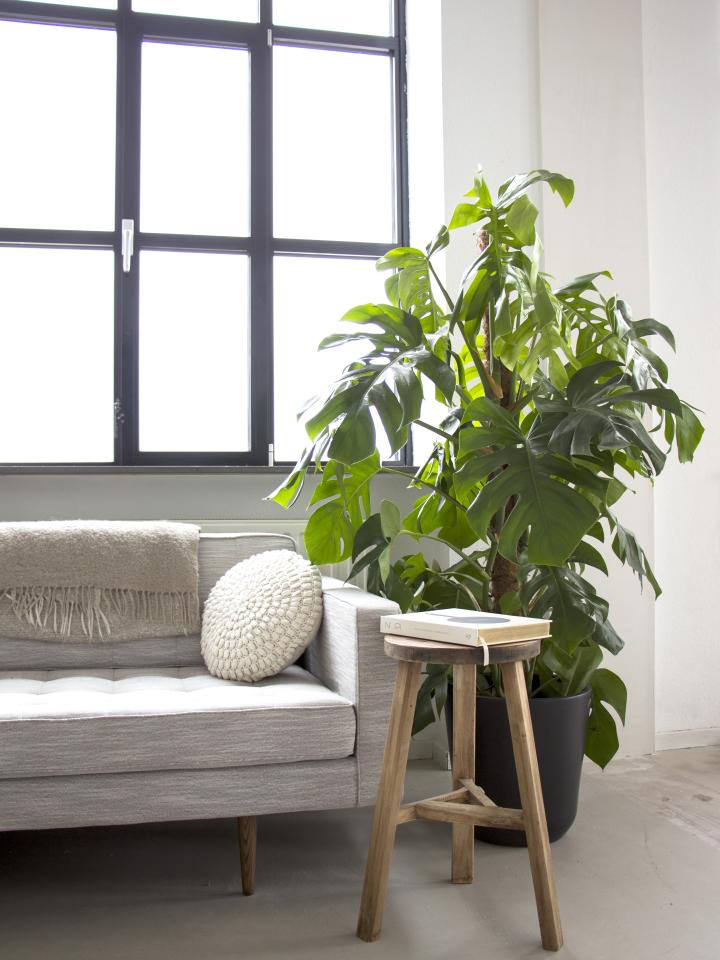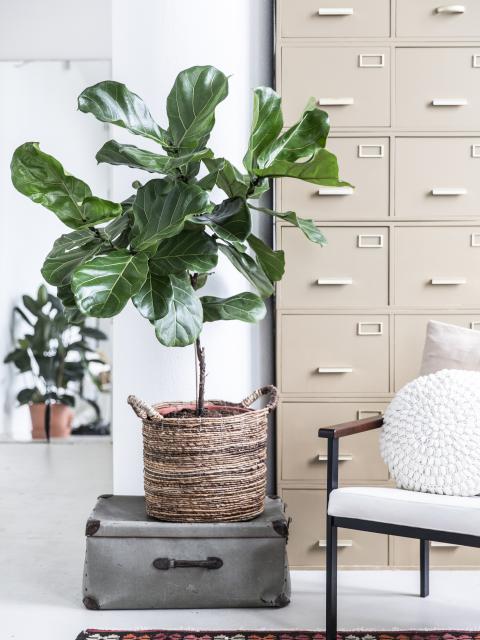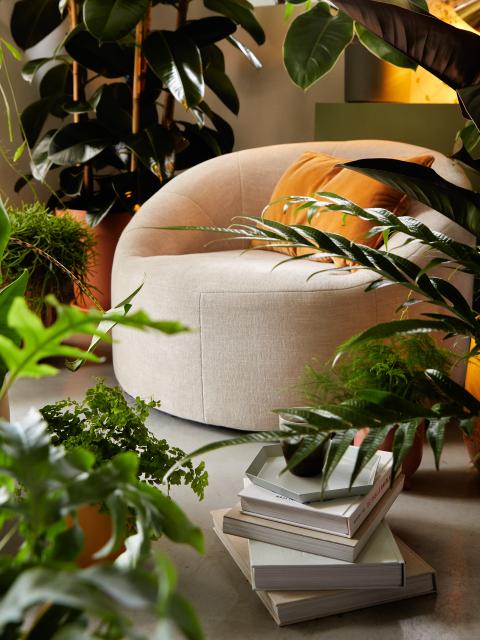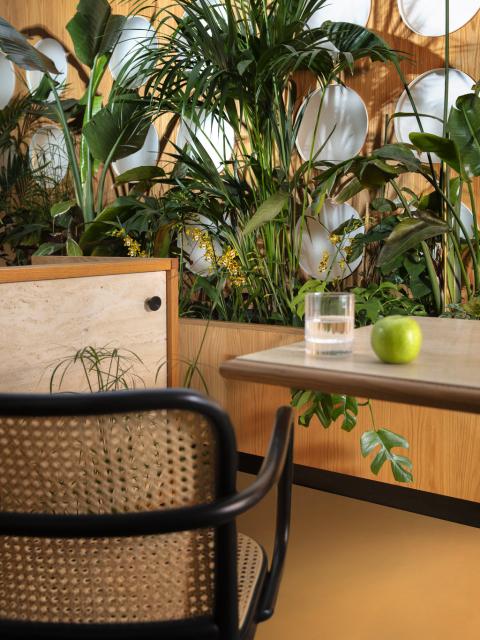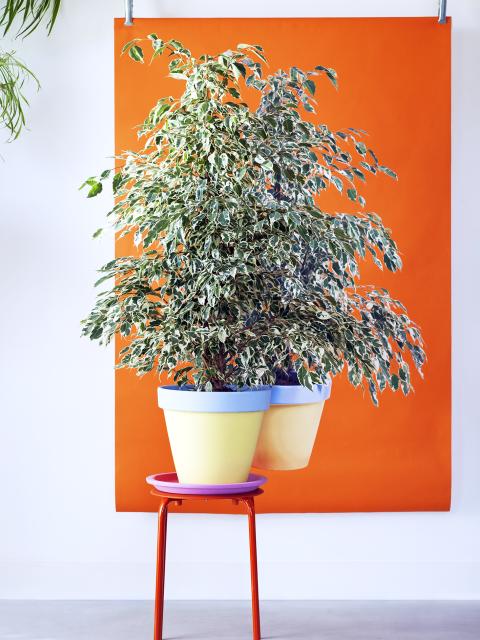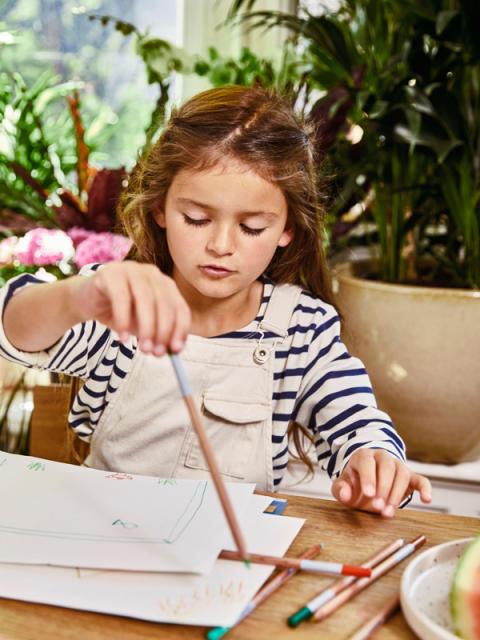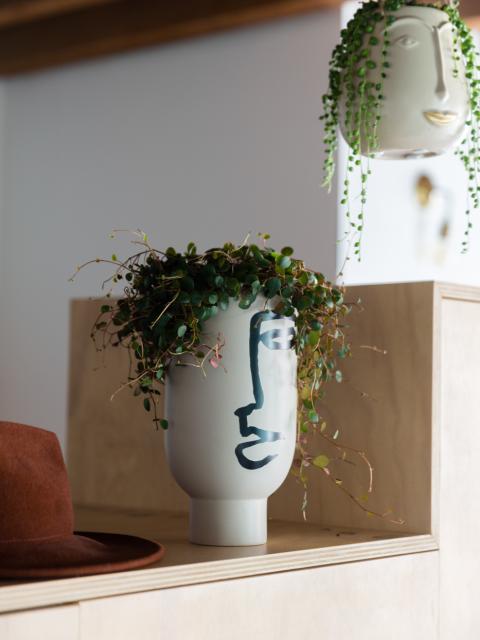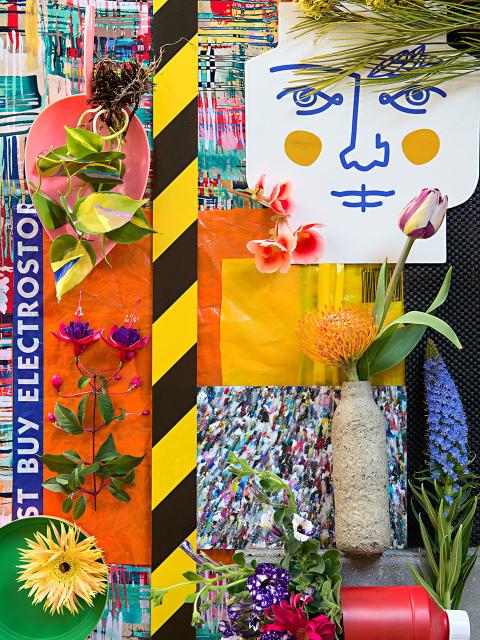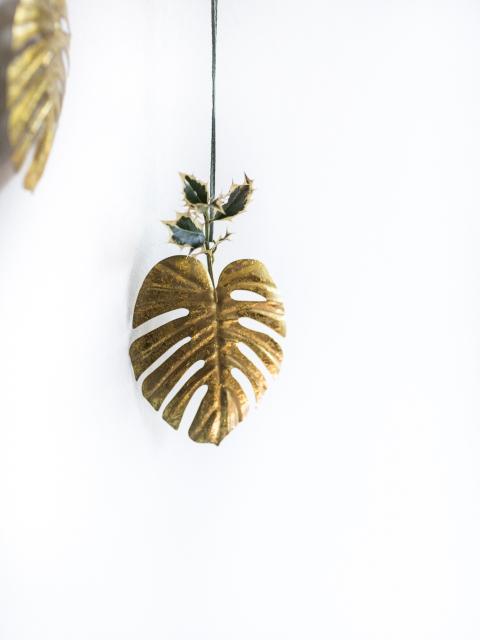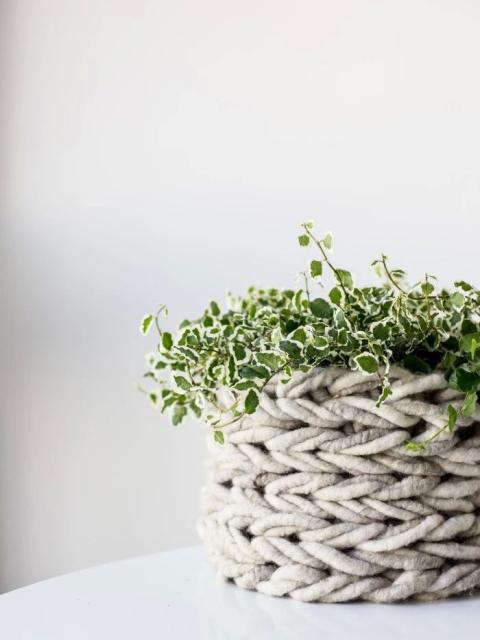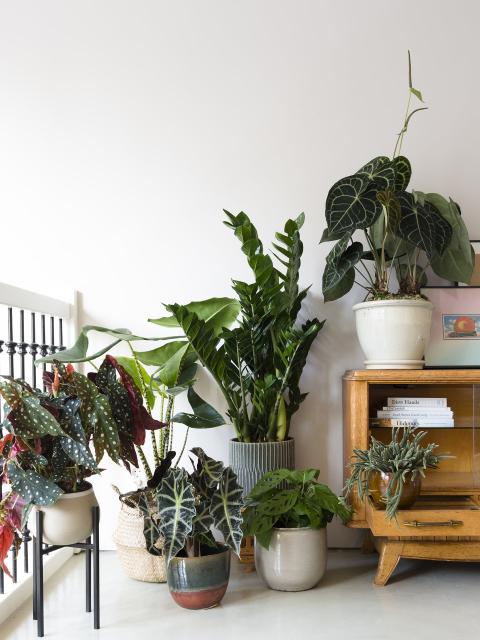MONSTERA: CHARACTERISTICS AND APPEARANCE
Monstera belongs to the arum family (Araceae), which also includes plants such as Anthurium and Philodendron. Monstera's stems are thick and the plant has large, often green, leaves. With sufficient light and moisture, the leaves will grow and develop natural deep incisions and/or holes. Adult leaves can be up to a metre in diameter! As the size, incisions and holes of the leaves are unusual, the plant has been named ‘Monstrum’, which means ‘monstrous’ in Latin.
WHAT'S THE FUNCTION OF MONSTERA'S AERIAL ROOTS?
Most larger Monsteras have aerial roots. These are roots that grow above the ground that can be recognised by their long, brown strings.. Monstera uses these aerial roots to extract more nutrients and moisture from its surroundings, enabling the plant to survive in environments that don't always have sufficient moisture. In nature, the plant uses these aerial roots to climb and attach itself to other plants, trees or other natural objects that surround it.
WHAT SHOULD YOU DO WITH MONSTERA'S AERIAL ROOTS?
The Monstera in your living room doesn't live the same way that it does in nature. Due to this, we recommend the following regarding the care of Monstera's aerial roots:
- You can guide aerial roots down by gently pushing them into the soil. There, the aerial roots will branch out and root into the soil, ensuring even more efficient uptake of nutrients.
- You can grow the aerial roots against a moss stick. The important thing is to make sure the aerial roots don't dry out. There's no need to water them, but it's best to hydrate them by regularly spraying them with a plant spray. Be careful as aerial roots are sensitive to too much moisture and can rot if kept too wet. If the humidity in the house is very low (e.g. due to air conditioning), you can use a humidifier to increase the humidity in the house.
- Don't like air roots and want to remove or reduce them? You can, but removing air roots is not recommended unless they are damaged or in the way. Removing aerial roots isn't the best thing for your plant as it can adversely affect its health. Remove only a few and never cut off too many Monstera aerial roots at once - let the plant get used to having fewer aerial roots slowly.
- Want to take Monstera cuttings (propagation) with aerial roots? You can! Carefully cut off an aerial root and place it in water to grow roots. Place the cutting in a bright spot (no direct sunlight). Once enough roots have formed and a large root ball has formed, you can plant the cutting into a pot.
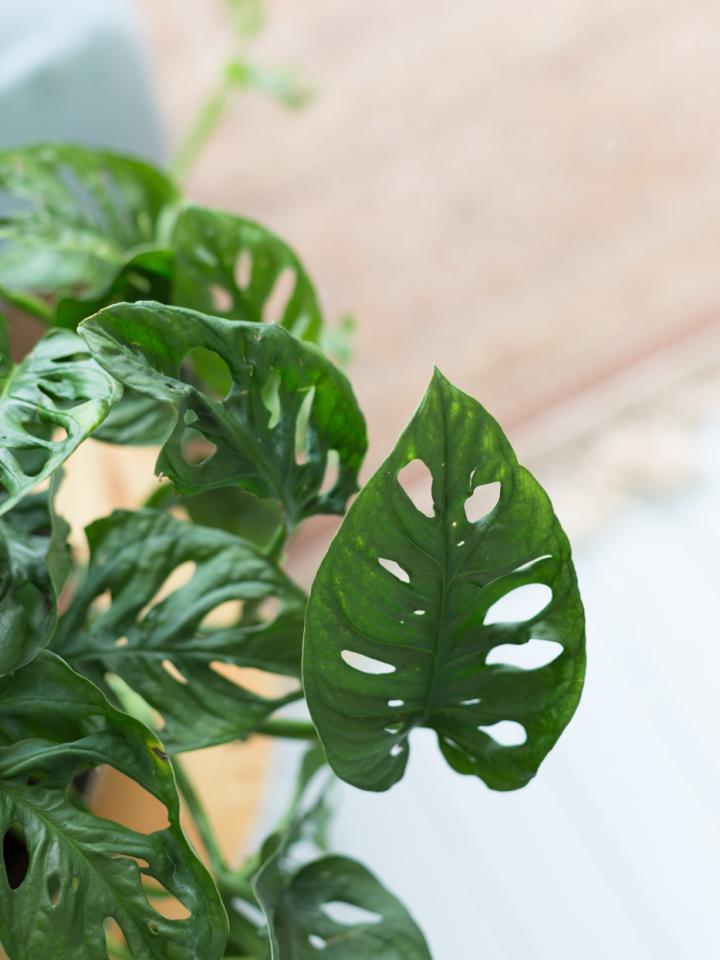
WHAT SPECIES OF MONSTERA ARE THERE?
There are more than 40 different species of Monstera, of which the Monstera Deliciosa is the best known. Besides the well-known green Monstera, there are also white- and cream-coloured varieties and varieties with small leaves and large holes. These are the two best-known and most popular varieties of Monstera as houseplants:
- Monstera Deliciosa: this species is recognisable by its large, green leaves with characteristic slits and holes. The plant can grow up to several metres tall! Did you know that Monstera Deliciosa gets its name from the delicious long fruits that grow on the plant in its natural habitat? The flavour is a bit like banana combined with pineapple. The Monstera Borsigiana resembles the Monstera Deliciosa, so much so that you can hardly tell the difference. Monstera Borsigiana is slightly smaller but faster growing than the Deliciosa variety, and its stem has ripples where the leaves are attached.
- Monstera Adansonii: this species of Monstera, also called Monstera Monkey Mask, has smaller leaves with holes. The holes don't split, so they remain holes rather than incisions as in the above species. Monkey Mask tends to stay smaller than the Deliciosa. The Adansonii likes to climb, but you can also let it grow downwards, making it into a hanging plant.
RARE SPECIES OF MONSTERA
The above species are the best-known varieties of Monstera, but you may also have heard of rarer and more expensive varieties of Monstera, such as these below:
- Monstera Variegata: this rare species is the extravagant sister of Monstera Deliciosa. The Variegata is a variegated plant with white-cream spots on green leaves. The leaves are sometimes predominantly white, sometimes predominantly green and sometimes a nice mix of both. The Monstera Variegata is slightly more delicate than the Monstera Deliciosa, as the white parts of the leaves do not contain chlorophyll (leaf dye), which is used for photosynthesis.
- Monstera Obliqua: this very rare species has delicate, thin leaves with large holes. About 90% of the leaves consist of holes and are slightly ragged, making the plant very fragile and special. This species needs high humidity and a relatively high temperature, which makes the plant difficult to care for indoors.
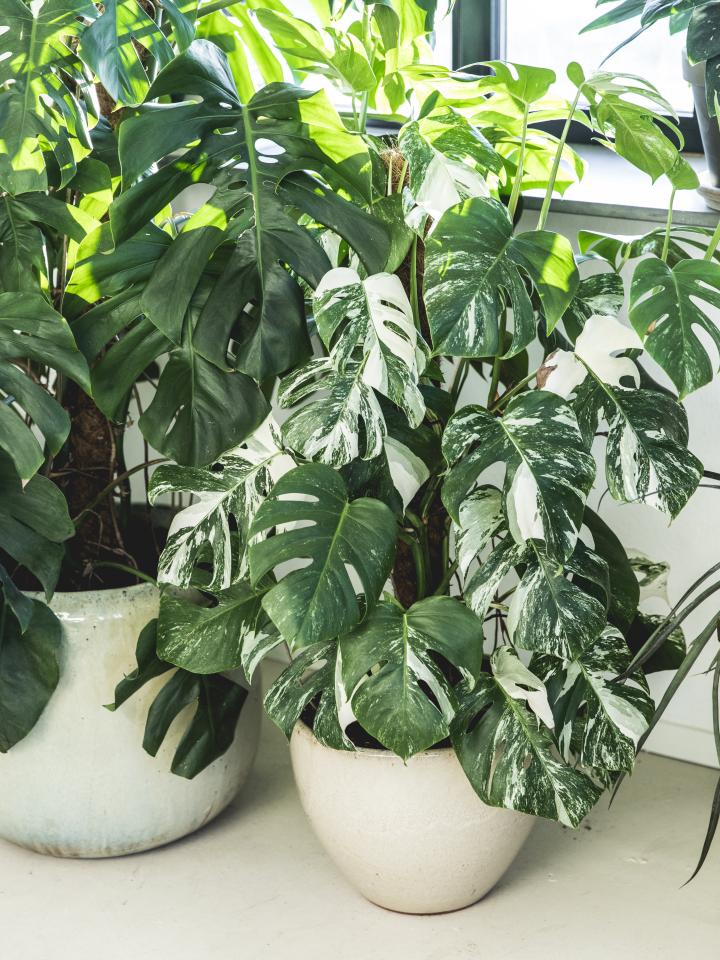
LOCATION AND CARE TIP FOR MONSTERA
When you've got a beautiful Monstera in your home, you'll want it to look fabulous as much as possible. In terms of care, Monstera is an easy, undemanding plant. Check the tips below for positioning and caring for Monstera:
- Monstera likes a bright location, but doesn't tolerate direct sunlight. Place the plant around 2 metres from a window facing east, west or north.
- Monstera likes high humidity. You should regularly spray the plant with a sprayer filled with water. This is especially advisable in winter, when the air is drier due to heating.
- Water the Monstera regularly. Make sure the potting soil dries out slightly between waterings, but never let the soil dry out completely.
- The potting soil may be slightly moist, but never soggy. Make sure the plant is not too wet as the roots will be unhappy.
- Are the leaves of your Monstera developing brown edges or curling up? This could be due to low humidity. If necessary, increase the humidity in the room by putting a bowl of water next to the plant.
- Monstera is usually sold with an accompanying stick, as the plant will get taller. Monstera needs support as it grows and, over time, may need a taller stick or other form of support.
- It's rare for a Monstera to flower indoors. If it happens to you, cut away the flowers. They drain a lot of energy from the plant and have a rather pungent smell.
MONSTERA: AN AIR-PURIFYING PLANT
Monstera is an air-purifying plant, which means that it's able to remove certain pollutants, such as volatile organic compounds, from the air. These are chemicals emitted by everyday objects and materials in your home, such as furniture, paint and cleaning products. Monstera helps absorb and convert these substances, reducing their concentration in the air. This improves indoor air quality and the plant contributes to a healthier living environment. Monstera also helps regulate humidity. By evaporating water through its leaves, the plant increases the humidity in its surroundings, which is beneficial in a dry living environment.
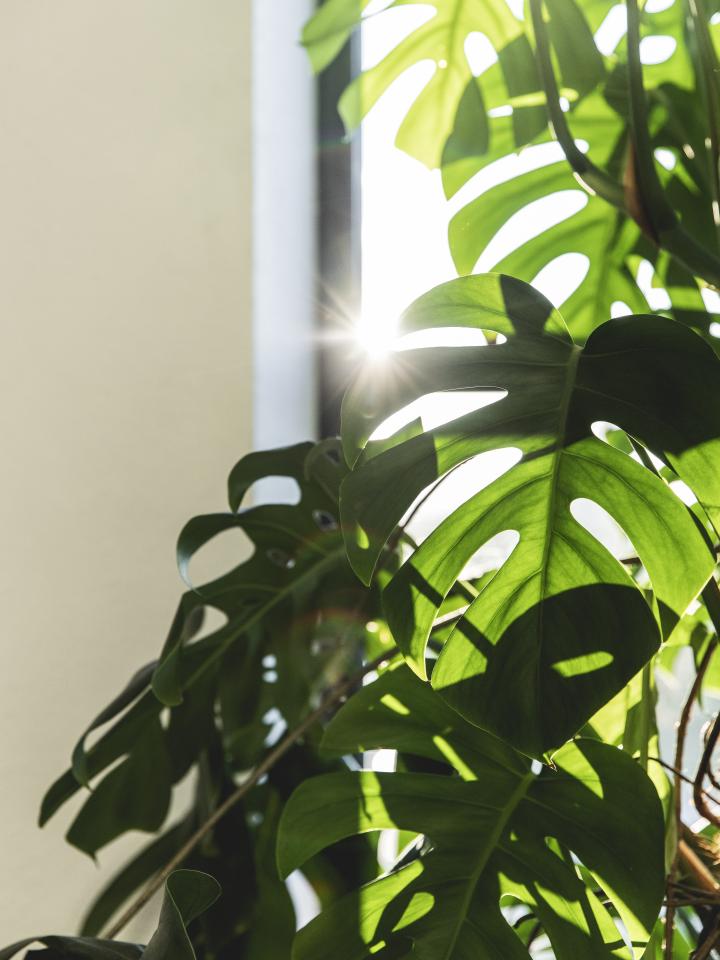
IS MONSTERA POISONOUS?
Yes, both the leaves and stems of Monstera are toxic to animals. If you have pets such as dogs or cats, this plant may not be the best choice. Pets don't even need to swallow the plant for it to affect them - just biting or chewing it can be enough for them to develop symptoms. Eating or chewing Monstera can cause irritation and pain in the mouth, throat, stomach and intestines of pets. If you suspect your pet has eaten Monstera, contact a vet immediately.
MONSTERA SYMBOLISM
Monstera has a rich growth habit and is rich in symbolism. The hole plant symbolises abundance, prosperity, longevity and long life.
- Abundance and prosperity: the lush, exuberant growth of Monstera is associated with an abundance of wealth, happiness and prosperity. The plant is therefore a popular gift for housewarmings and business openings.
- Sustainability and longevity: due to its resilient nature (the plant thrives in a variety of conditions and with minimal care), the Monstera symbolises sustainability and longevity.
MONSTERA ORIGINS
Monstera originates from the tropical rainforests of Central and South America. The plant thrives there because of the humid, warm conditions. Monstera is by nature a true climbing plant, climbing up trees as a vine in Panama and southern Mexico, sometimes up to 20 metres high. Monstera Deliciosa used to be cultivated in Central America for its decorative value and the long, edible fruits that grow on the plant in the wild.
Monstera's popularity as a houseplant began in the 19th century, when explorers and botanists brought the plant to Europe. Its exotic appearance and unique leaf shape soon made the Monstera popular. Soon, Monstera spread worldwide and gained popularity in homes, offices and public spaces around the world. Today, Monstera is one of the most popular houseplants because of its attractive appearance, low-maintenance nature and air-purifying powers.
